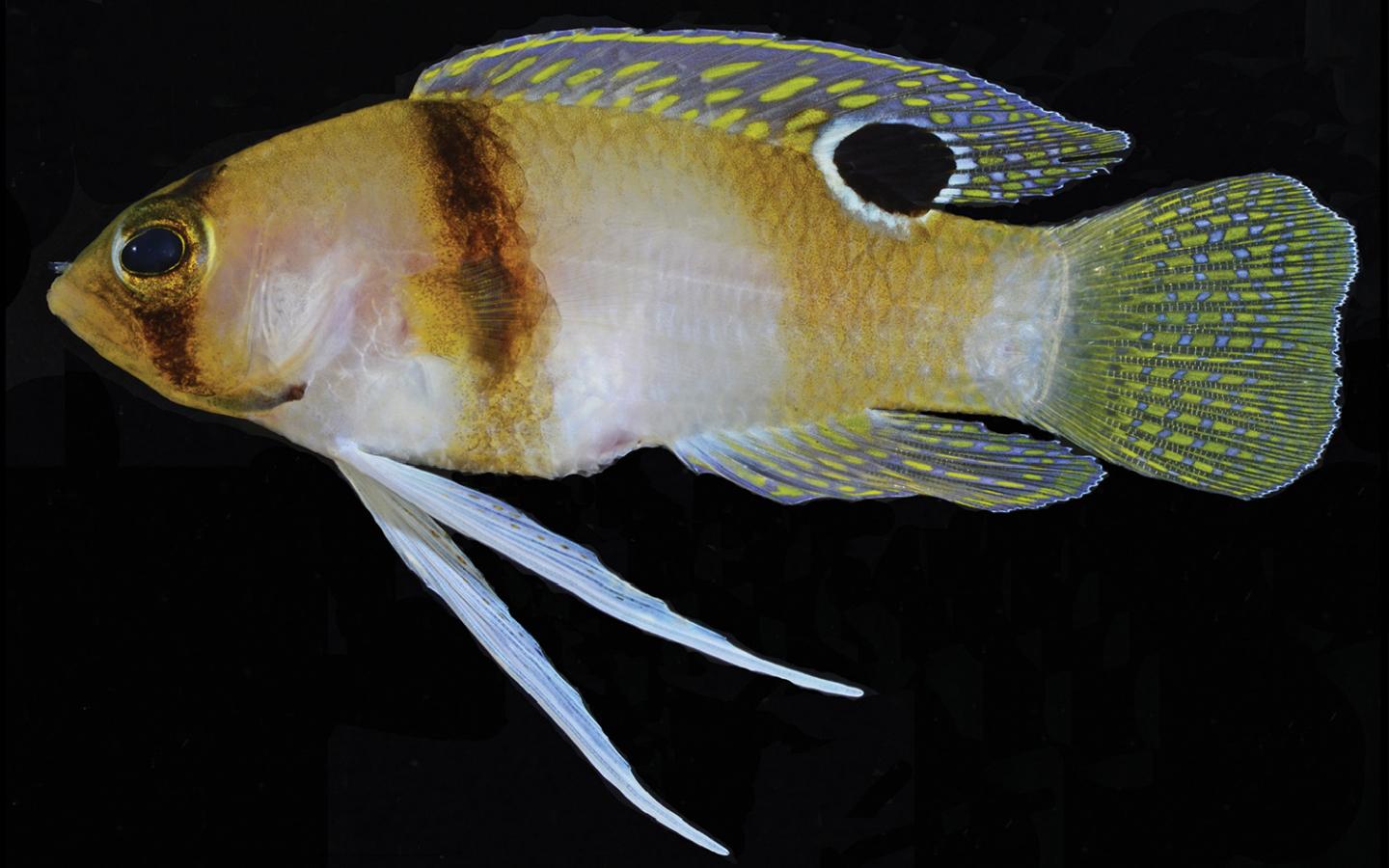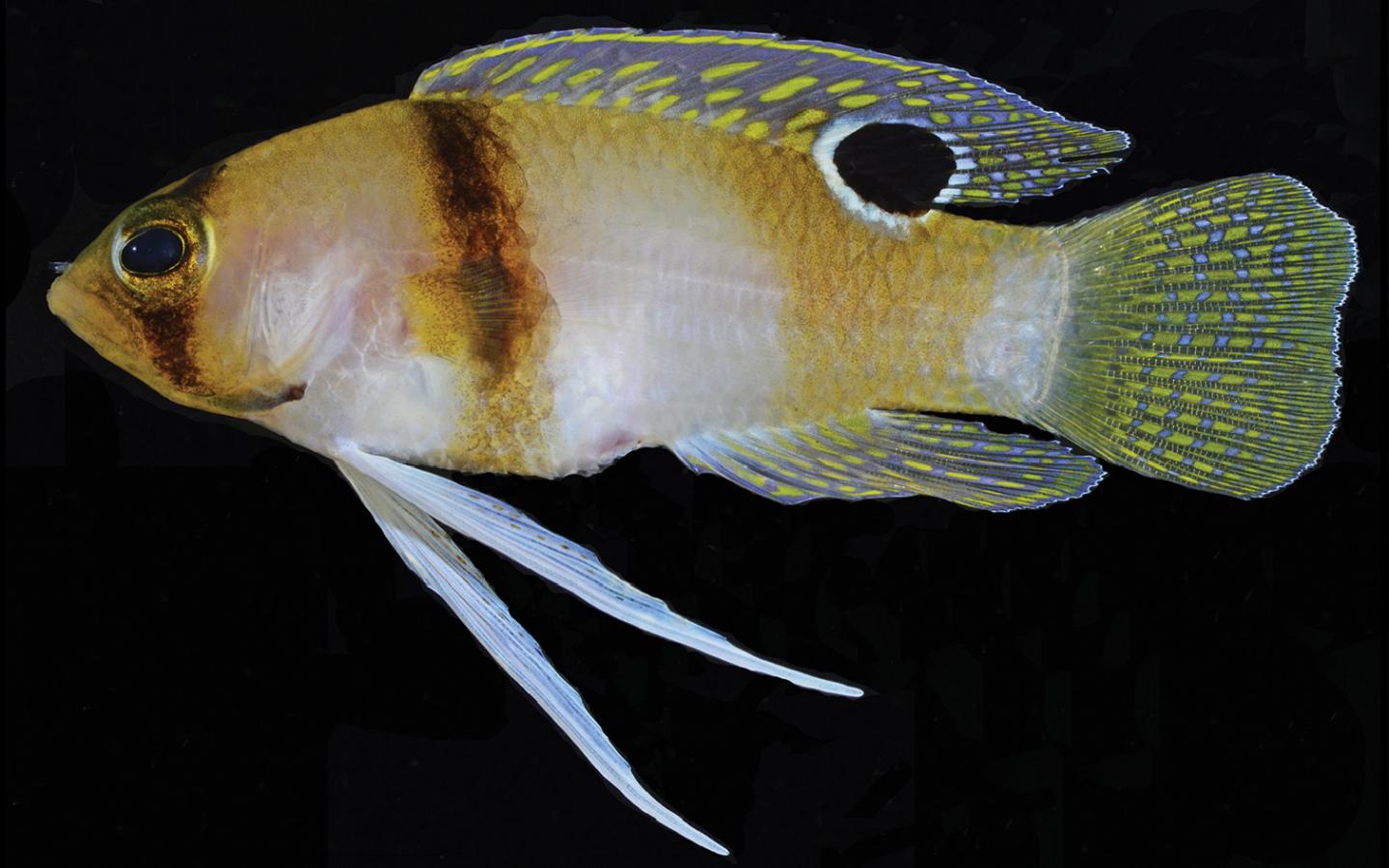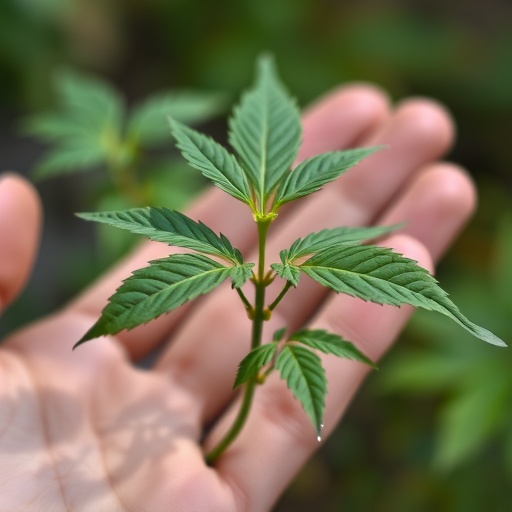
Credit: D. R. Robertson and C. C. Baldwin
Living in deep reefs in the Atlantic Ocean, the banded basslet, a small and colorful species with a wide range of distribution, has long been thought to undergo significant changes during its growth into an adult. Suspiciously, the juveniles appeared much more heavily banded. Recently, however, American scientists figured out that the 'juveniles' were in fact a new species.
In a paper published in the open access journal ZooKeys, Dr. Carole C. Baldwin, Ai Nonaka, Dr. Luke Tornabene, all affiliated with the National Museum of Natural History, Smithsonian Institution, and Dr. Ross Robertson, Smithsonian Tropical Research Institute, Panama, describe two new basslet species discovered in the Caribbean off the southern coast of Curaçao. Their finding comes as part of the Smithsonian's Deep Reef Observation Project (DROP), devoted to documenting the biodiversity in the poorly studied depth zone of 50-300 m with the help of a special submersible, called Curasub.
Having been previously confused with the banded basslet's juveniles, one of the new species was discovered after the submersible's hydraulic arms collected specimens with smaller size and thicker bands from shallower depths. Subsequent study of the specimens revealed additional morphological, as well as molecular, evidence that suggest the specimens represent a new species.
The species is characterized by predominantly white to tan colored body with three vertical blackish bands, one running across its head, and two along the body. The latter often appear hourglass-shaped, with their middles being narrower and lighter. Due to this resemblance, the authors suggest that the new species is commonly called Hourglass basslet, while its scientific name is Lipogramma levinsoni, in recognition of the generous and continuing support of research on neotropical biology at the Smithsonian Tropical Research Institute (Panamá) made by Frank Levinson.
The second new basslet from Curaçao can be distinguished by the three dusky bars likewise running across its head and body. Its ground color is yellow to white, with the bar at the rear being much lighter than the rest. Reflecting its appearance, its common name is proposed to be Yellow-banded basslet, while its scientific identity is Lipogramma haberi, in recognition of Spencer and Tomoko Haber, who funded and participated in one of the submersible dives that resulted in the collection of a paratype of the new species.
In their study, the researchers also point out that it is likely that there are at least two additional cryptic species belonging to the same genus. Those species are currently being analyzed in ongoing investigations of the Caribbean deep-reef ecosystems.
Past discoveries made as part of the DROP Project at Curaçao include adorable fishes such as the Stellate scorpionfish and the Godzilla goby. To recognize all involved in the DROP research program, the team have described the small blenny fish as Haptoclinus dropi, after the project itself, while another goby species, Coryphopterus curasub, bears the name of the submersible used in the dives.
###
Original source:
Baldwin CC, Robertson RD, Nonaka A, Tornabene L (2016) Two new deep-reef basslets (Teleostei, Grammatidae, Lipogramma), with comments on the eco-evolutionary relationships of the genus. ZooKeys 638: 45-82. https://doi.org/10.3897/zookeys.638.10455
Additional information:
About the DROP Project:
The Deep Reef Observation Project (DROP) is a Smithsonian research program launched to explore marine life and monitor changes on deep reefs in the southern Caribbean. Found below SCUBA diving depths, deep reefs may represent the most diverse underexplored marine ecosystems in the world.
Shallow water coral reefs are in peril globally, but comparatively little is known about deep reefs, including what role they may play in the survival of shallow reefs above. Diving to 1,000 ft. in a state-of-the-art submersible is allowing Smithsonian marine scientists to visit deep reefs to study and monitor these ecosystems.
Since 2011 DROP has received funding from Smithsonian's Consortium for Understanding and Sustaining a Biodiverse Planet, National Geographic's Committee for Research and Exploration Grant, Prince Albert II of Monaco Foundation, the Smithsonian Tropical Research Institute, the National Museum of Natural History and private donations.
Media Contact
Carole C. Baldwin
[email protected]
@Pensoft
http://www.pensoft.net
############
Story Source: Materials provided by Scienmag





